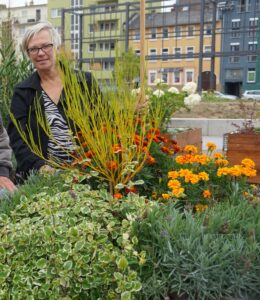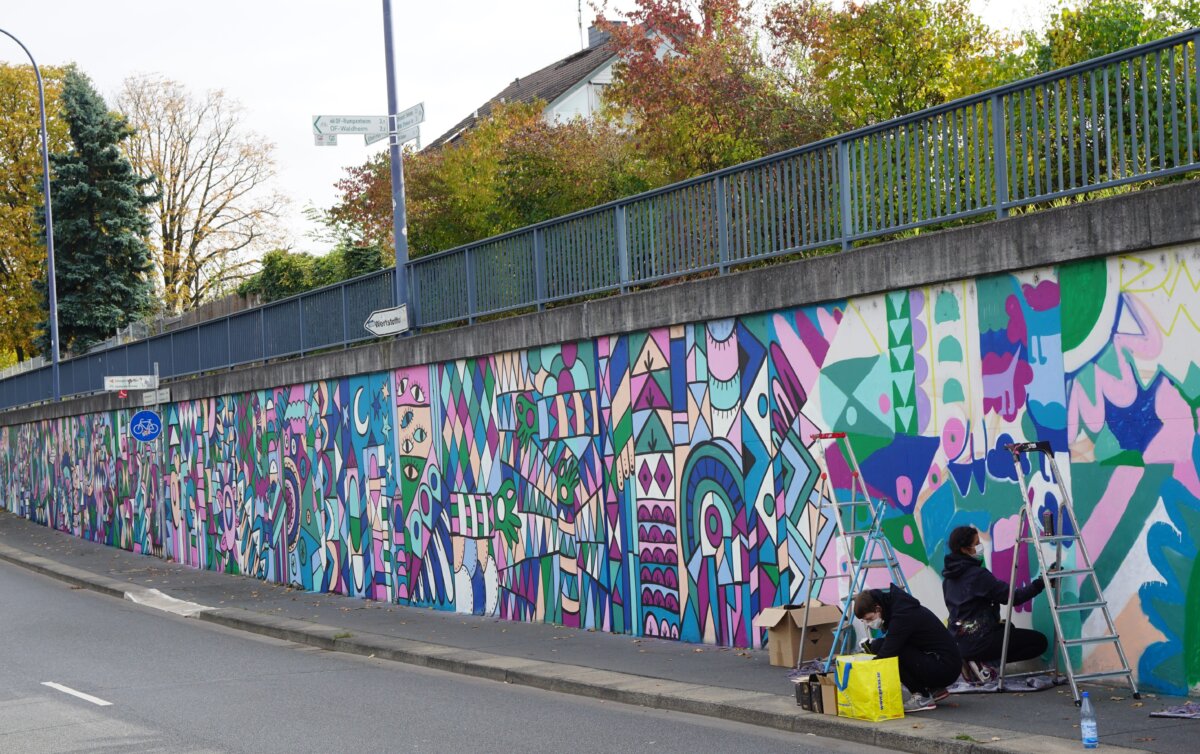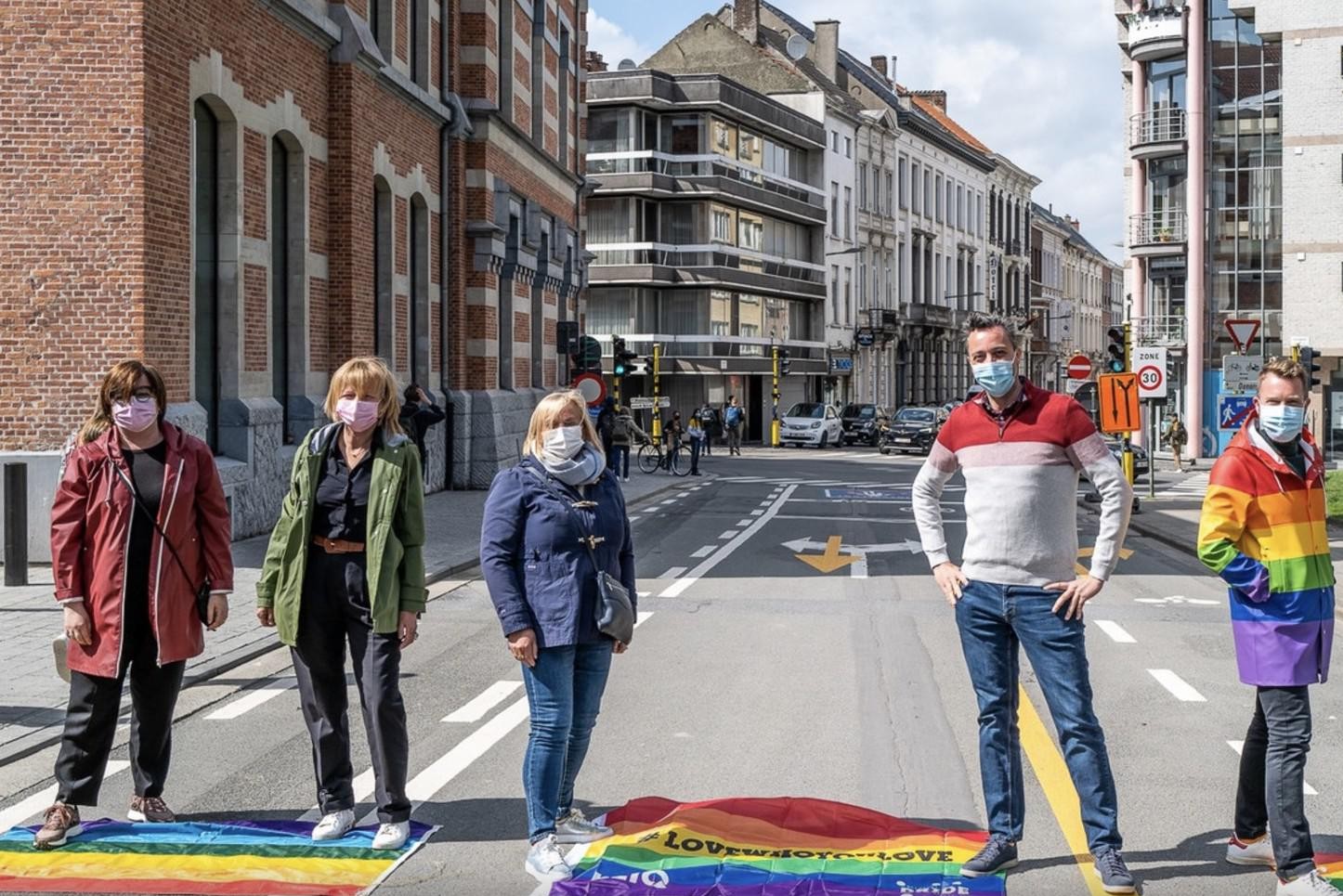–
The value of a home is not limited to your own four walls. The quality of life also depends on the living environment. The GBO Gemeinnützige Baugesellschaft mbH Offenbach of Stadtwerke Offenbach, which has been in existence for 100 years, has not only been committed to its own tenants for many years, but also in various ways for the quality of life in the city.
The prime example is the dampening effect on the rent index due to the good 2,000 subsidized apartments and the inexpensive 3,000 or so apartments in our own portfolio. With the takeover of the Stadthalle and Capitol buildings, it provides the basis for a diverse cultural offering in the city. The renovation of run-down properties in the Ostpol start-up center or the strikingly shining boarding house Lichtpol upgraded the Mathildenviertel. Cheap accommodation for students and senior citizens can be found in the portfolio as well as studios for artists.
“It was only a logical consequence of this commitment for the entire city that the Offenbach municipal utilities also took over the ‘Better living in Offenbach’ project in 2013 under the umbrella of their subsidiary GBO,” says GBO managing director Daniela Matha. “This has been taking care of the quality of life of the citizens very successfully since 2007.” “Live better in Offenbach” (BliO) was originally a cooperation between the municipal press office and the corporate communication of the municipal utilities. Cleanliness and order in the city quarters, especially in the eastern city center, in the city center and the districts of Nordend and Lauterborn, as well as the Senefelder district for several years, were the main concerns.
“BliO is particularly active in the districts in which the GBO owns many apartments,” says Martin Wilhelm, city councilor and chairman of the GBO’s supervisory board. “When the quality of life increases here as a result of the many small campaigns and larger projects, not only the tenants of the municipal housing association benefit, but the entire neighborhood.”
When the company was founded, Sabine Süßmann was entrusted with the project management, a very well networked civil servant in Offenbach who at the time was working as a personnel officer for the municipal utilities. “The project description not only sounded good, the implementation was also good,” she recalls in retrospect. “We started with various organizations to take stock of the respective district: Where was there superfluous street furniture such as nonsensical traffic signs, where did graffiti disturb the street scene, which original green areas were now only unsightly dog toilets?”
There was an overarching cleanliness strategy together with the public order office. Campaigns on the subject of dogs and dog feces, cigarette butts and other litter were accompanied by extensive public relations work. Eyesores were mostly removed together with the local residents. “With ‘Better living in Offenbach’ we want to arouse initiative in the districts, bundle and efficiently support the commitment of citizens or neighboring businesses,” says Süßmann. Graffiti was eliminated, the youth art school, freelance artists, school classes or agencies were won over to design dreary surfaces. In 2018, thanks to the work of the artist Thekra Jaziri as part of a “Girls Street Art” project, the barren concrete wall on Lammerspieler Weg became a colorful eye-catcher. Jaziri has also given Mathildenplatz colorful liveliness with a painted play carpet. Markus Dörr from the Artmos4 agency designed the gray concrete walls at the Waldstrasse railway underpass with striking Offenbach buildings as early as 2008.
Time and again, the competencies of the city and municipal utilities were used and networked with one another. For example, concepts for green areas are developed with the Office for Urban Planning, Traffic and Construction Management and implemented with the City Service. “Thanks to the backing of the municipal utilities and the city, with ‘Better living in Offenbach’ we can have a good influence on the quality of the living environment and thus on the quality of life and stay for all citizens in the city,” says GBO managing director Daniela Matha.

Often, on the initiative of local residents, joint waste collection campaigns were organized or green spaces were redesigned. They not only form the basis for such campaigns, they should also ensure the sustainability of the upgrading through sponsorships. That doesn’t always work as well as hoped, but often enough: For example, the new bookcase in the harbor garden is looked after on a voluntary basis by six godparents from the Nordend and the harbor district, and numerous citizens took care of the new flower beds on the roadside. “It is always easiest to find people who will sponsor the green spaces on their doorstep,” says Sabine Süßmann. “The trend towards urban gardening did the rest to increase interest in one’s own green and sustainable environment.”
The response to the Hafengarten project, an interim project to create an open space during the development of the former industrial wasteland Offenbacher Hafen in the new urban district, was correspondingly great. There is a list of prospects waiting for a parcel. In pots, discarded bathtubs, bowls and canisters, people of all nationalities, especially from the north end, garden together here, get to know each other and thereby strengthen the community in the neighborhood.
Another project by “Better living in Offenbach” also contributes to this. The fairy tale on Goetheplatz in Nordend was initiated by BliO six years ago and has been organized ever since. The range of regional fresh goods in organic quality not only closes a supply gap in the district, it above all strengthens cooperation: Tables and benches were part of the concept from the beginning so that customers not only shop, but also sit together for a while . The neighbors start talking over snacks and drinks. It worked so well that Sabine Süßmann initiated a similar offer with drinks and food in the Mathildenviertel. A meeting place with French flair has developed here in the summer months under the title “Après-Midi”.
The campaigns are implemented with an annual budget of almost 400,000 euros, from which, in addition to Sabine Süßmann and an assistant, two so-called walkers who ensure the cleanliness of the Nordend and the port, as well as a coordinator for the port garden are paid. From this comes the money for various events and campaigns, additional benches for upgrading places such as B. on Mathildenplatz and in the composers’ quarter, the planting of the Roland garden, which consists of around 20 raised beds, in Senefeld’s district park, inner-city projects, games and handicrafts for children and follow-up care for projects such as renewed cleaning.
With the garden projects, the new flower beds and benches as well as the social meeting points, it becomes clear how the focus of BliO is shifting: from tidying up the city districts to projects that increase the quality of stay in public spaces. So that all citizens feel at home in their city.
(Text: PM City Offenbach)
–


